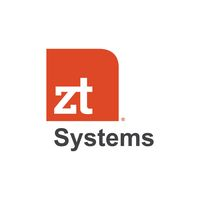AMD's Bold Move: A $4.9 Billion Bet on AI Infrastructure
August 21, 2024, 9:40 am
In a landscape dominated by giants, AMD is making waves. The chipmaker has signed a monumental deal to acquire ZT Systems for $4.9 billion. This acquisition is not just a number; it’s a strategic maneuver aimed at reshaping the AI infrastructure market. With this move, AMD is stepping into the ring to challenge Nvidia, the current heavyweight champion in AI chips.
ZT Systems, based in New Jersey, is no stranger to the AI game. Founded nearly three decades ago, it specializes in custom computing infrastructure for major players in the tech world. Think of them as the architects behind the scenes, building the frameworks that support the likes of Microsoft, Meta, and Amazon. This acquisition brings a wealth of expertise into AMD’s fold, including a thousand design engineers. It’s like adding a seasoned team of builders to a construction project, ensuring that the foundation is solid and the structure is sound.
AMD’s CEO, Lisa Su, sees this acquisition as a critical step in accelerating the adoption of its Instinct line of AI data center chips. The Instinct chips are AMD’s answer to Nvidia’s popular GPUs, and they are designed to handle the heavy lifting of AI workloads. By integrating ZT Systems’ capabilities, AMD aims to enhance its offerings and deliver comprehensive AI solutions that can be deployed rapidly across cloud and enterprise environments.
The deal is expected to close in the first half of 2025, pending regulatory approval. This timeline suggests that AMD is not just thinking about the present; it’s laying the groundwork for the future. The $4.9 billion valuation includes a contingent payment of up to $400 million, which indicates that AMD is willing to invest further based on ZT Systems’ performance post-acquisition. It’s a calculated risk, akin to planting seeds in fertile soil, hoping for a bountiful harvest.
AMD’s strategy is clear: it wants to build a robust AI ecosystem. Over the past year, the company has invested more than $1 billion to expand its AI hardware and software capabilities. This acquisition is part of a larger narrative where AMD is not just a player but a contender in the AI arena. The company’s recent launches, including the MI300 line of AI chips, have already begun to gain traction. In fact, Microsoft has integrated the MI300 into its Azure cloud platform, showcasing AMD’s growing influence.
However, the road ahead is not without challenges. Nvidia currently holds a commanding lead in the AI data center market, with revenues soaring to $22.6 billion in a recent quarter. AMD’s data center revenue, while growing, still pales in comparison. The company’s MI300 chips have made headlines, but they need to translate that buzz into substantial market share. This acquisition is a strategic play to bridge that gap.
Nvidia’s success can be attributed to its “systems” approach. It offers a complete package: hardware, software, and networking solutions that simplify the development of AI applications. AMD’s acquisition of ZT Systems signals its intent to adopt a similar strategy. By enhancing its systems offerings, AMD aims to provide end-to-end solutions that can compete directly with Nvidia’s comprehensive infrastructure.
The integration of ZT Systems into AMD’s Data Center Solutions Business Group will be pivotal. ZT’s expertise in design, integration, and deployment will bolster AMD’s capabilities. Frank Zhang, ZT’s CEO, will lead the manufacturing business, while Doug Huang, ZT’s President, will oversee design and customer enablement. This leadership structure ensures that ZT’s strengths are fully leveraged within AMD’s framework.
Moreover, AMD is not stopping here. The company is actively seeking a strategic partner to acquire ZT Systems’ manufacturing business, which is recognized as a leader in the U.S. This move reflects AMD’s commitment to enhancing its manufacturing capabilities while focusing on its core strengths in AI technology.
As the tech landscape evolves, AMD’s acquisition of ZT Systems represents a bold step into the future. It’s a gamble, but one that could pay off handsomely. The AI market is burgeoning, and companies are pouring resources into developing advanced models. AMD’s strategy positions it to capture a share of this lucrative market.
In conclusion, AMD is not just playing catch-up; it’s making a statement. The acquisition of ZT Systems is a strategic move designed to enhance its AI infrastructure capabilities and challenge Nvidia’s dominance. With a solid plan and significant investments, AMD is setting the stage for a fierce competition in the AI arena. The next few years will be crucial as AMD seeks to transform its vision into reality. The stakes are high, but so are the potential rewards. The race is on, and AMD is ready to sprint.
ZT Systems, based in New Jersey, is no stranger to the AI game. Founded nearly three decades ago, it specializes in custom computing infrastructure for major players in the tech world. Think of them as the architects behind the scenes, building the frameworks that support the likes of Microsoft, Meta, and Amazon. This acquisition brings a wealth of expertise into AMD’s fold, including a thousand design engineers. It’s like adding a seasoned team of builders to a construction project, ensuring that the foundation is solid and the structure is sound.
AMD’s CEO, Lisa Su, sees this acquisition as a critical step in accelerating the adoption of its Instinct line of AI data center chips. The Instinct chips are AMD’s answer to Nvidia’s popular GPUs, and they are designed to handle the heavy lifting of AI workloads. By integrating ZT Systems’ capabilities, AMD aims to enhance its offerings and deliver comprehensive AI solutions that can be deployed rapidly across cloud and enterprise environments.
The deal is expected to close in the first half of 2025, pending regulatory approval. This timeline suggests that AMD is not just thinking about the present; it’s laying the groundwork for the future. The $4.9 billion valuation includes a contingent payment of up to $400 million, which indicates that AMD is willing to invest further based on ZT Systems’ performance post-acquisition. It’s a calculated risk, akin to planting seeds in fertile soil, hoping for a bountiful harvest.
AMD’s strategy is clear: it wants to build a robust AI ecosystem. Over the past year, the company has invested more than $1 billion to expand its AI hardware and software capabilities. This acquisition is part of a larger narrative where AMD is not just a player but a contender in the AI arena. The company’s recent launches, including the MI300 line of AI chips, have already begun to gain traction. In fact, Microsoft has integrated the MI300 into its Azure cloud platform, showcasing AMD’s growing influence.
However, the road ahead is not without challenges. Nvidia currently holds a commanding lead in the AI data center market, with revenues soaring to $22.6 billion in a recent quarter. AMD’s data center revenue, while growing, still pales in comparison. The company’s MI300 chips have made headlines, but they need to translate that buzz into substantial market share. This acquisition is a strategic play to bridge that gap.
Nvidia’s success can be attributed to its “systems” approach. It offers a complete package: hardware, software, and networking solutions that simplify the development of AI applications. AMD’s acquisition of ZT Systems signals its intent to adopt a similar strategy. By enhancing its systems offerings, AMD aims to provide end-to-end solutions that can compete directly with Nvidia’s comprehensive infrastructure.
The integration of ZT Systems into AMD’s Data Center Solutions Business Group will be pivotal. ZT’s expertise in design, integration, and deployment will bolster AMD’s capabilities. Frank Zhang, ZT’s CEO, will lead the manufacturing business, while Doug Huang, ZT’s President, will oversee design and customer enablement. This leadership structure ensures that ZT’s strengths are fully leveraged within AMD’s framework.
Moreover, AMD is not stopping here. The company is actively seeking a strategic partner to acquire ZT Systems’ manufacturing business, which is recognized as a leader in the U.S. This move reflects AMD’s commitment to enhancing its manufacturing capabilities while focusing on its core strengths in AI technology.
As the tech landscape evolves, AMD’s acquisition of ZT Systems represents a bold step into the future. It’s a gamble, but one that could pay off handsomely. The AI market is burgeoning, and companies are pouring resources into developing advanced models. AMD’s strategy positions it to capture a share of this lucrative market.
In conclusion, AMD is not just playing catch-up; it’s making a statement. The acquisition of ZT Systems is a strategic move designed to enhance its AI infrastructure capabilities and challenge Nvidia’s dominance. With a solid plan and significant investments, AMD is setting the stage for a fierce competition in the AI arena. The next few years will be crucial as AMD seeks to transform its vision into reality. The stakes are high, but so are the potential rewards. The race is on, and AMD is ready to sprint.



